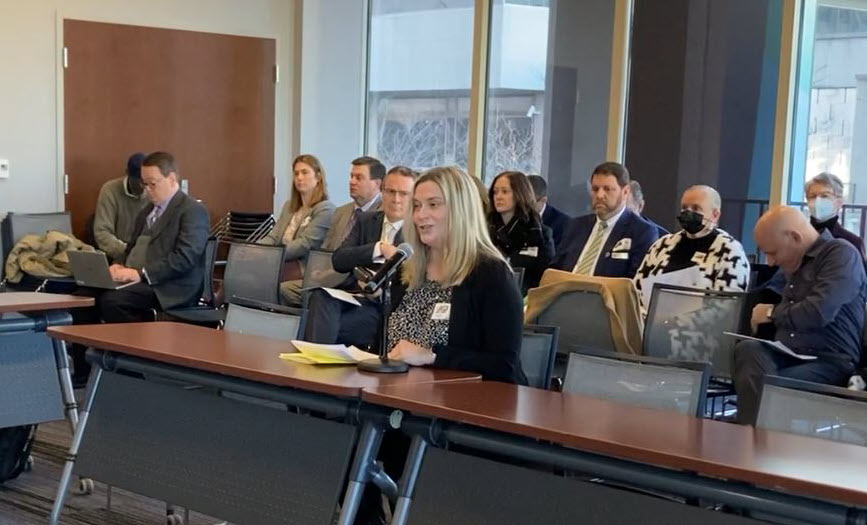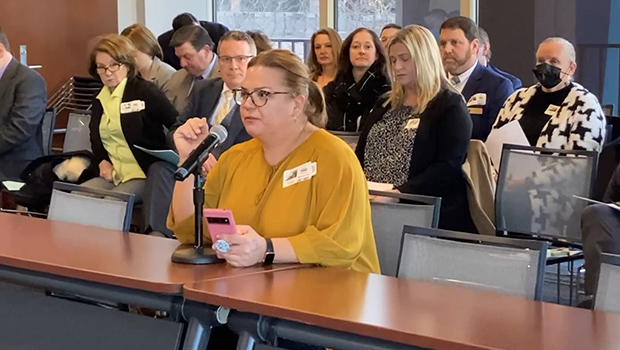A burdensome and time-consuming system with numerous glitches that takes teachers away from their students and is leading educators to burn out and leave the profession—that’s how special education teachers described CT-SEDS to the State Board of Education yesterday.
CT-SEDS, the Connecticut Special Education Data System, rolled out this school year, is a system for reporting special education compliance, and teachers received little training before they had to begin using the onerous and challenging platform.
“CT-SEDS has had a negative impact on my students,” said Cromwell kindergarten special education teacher Georgann Stokes. “Due to this digital system, I have had to use most of my daily planning time to problem-solve scenarios and help my colleagues to navigate this system. The quality of my lessons has been diminished, which directly impacts the progress of my students. If I can’t get my planning done at school, I spend about two to four hours after my family goes to bed to write evaluations and progress reports and answer parent emails. It is unsustainable and it is causing teachers to leave the profession and enter into other careers due to teacher burnout.”
CEA Treasurer and Cooperative Educational Services special education teacher Stephanie Wanzer said, “I am not alone in saying that this is one of the hardest years I have had teaching in all my years at CES. When this was rolled out, numerous teachers and good administrators decided to retire because the special education field had become unmanageable.”
Danielle Fragoso, pictured above, a special education teacher at Daniel Hand High School in Madison, said it took her about three hours to complete one IEP in CT-SEDS at the beginning of the year and after using the system for several months it still takes her two and a half hours, but she knows the process has taken over 10 hours for some teachers.
“Where is this time coming from?” Fragoso asked. “These hours of training, learning, and added writing time have not been accounted for in our days. That burden has just been left to the teachers and, as always, we do what we need to do for our kids and as professionals.”
“The CT-SEDS digital platform is full of glitches,” said Stokes. She regularly receives numerous emails from administrators and colleagues who can’t access features of the platform, creating delays in completing paperwork as they await technical assistance.

Cromwell special education teacher Georgann Stokes told the State Board of Education about the many problems special education teachers face when using CT-SEDS.
Teachers also report glitches that wipe out information already entered, even after CT-SEDS tells them it has been saved.
“Sometimes CT-SEDS saves properly and sometimes it doesn’t, causing lost data and time spent recreating it,” Wanzer said. “Sometimes the system duplicates across an entire entry a goal you have inputted once and intended to appear only once, resulting in time lost deleting extraneous information.”
“One of my biggest frustrations with the program, that I would hope is an easy fix and would help all of us, is the five-minute time out feature,” said Fragoso. “If I’m trying to type an IEP and a student comes to me with a question, if I forget to save before helping the student, my work is gone. That has been very time consuming, and frustrating—I don’t have the time to re-do my work. The ‘choppiness’ of the document—the mini sections—makes it so that you need to sit and write your IEPs uninterrupted, which, realistically, can barely happen in a school setting, so I have found myself having to take this work home and use my own time to write them.”
To provide some relief to special education teachers, the State Department of Education is providing $2.7 million to local districts for stipends.
“While this may sound like a reasonable sum, it is a small amount per teacher that does not even compensate them for what has been, on average, 20-30 extra hours per month, much of which pushes into nights and weekends,” Wanzer said. “Additional compensation is welcome, but what our members urgently need is help and relief.”
She asked the State Board and Department of Education to consider allocating funds to help districts hire more paraeducators and administrative help to comply with CT-SEDs reporting, provide sufficient funds to districts to compensate educators for the added hours of work necessary for CT-SEDS compliance, and allocate funds to help train a new workforce of educators to remedy the special education teacher shortage.
“I just wish that those implementing each new initiative would include us in the process,” Fragoso said. “As educators and as professionals responsible for the neediest of children in our state, we deserved a better rollout and deserve to be considered in our needs right now. A dedicated phone/helpline would be a start. Compensating teachers for the extra time spent for their work would honor our time as professionals.”
CEA President Kate Dias told the Board that it’s time to look at the entire field of special education. “We should really step back and think, how do we make this a tenable job, because the undercurrent of the testimony you just heard is that we have built positions that are impossible for these teachers to do. Maybe CT-SEDS is the catalyst for this. It’s drawn attention to the extra workload, the intensity of the workload, the diversity of the workload, and maybe it’s time to look at special education as a field and think, how do we build this so that we give our students what they need, we support our educators, and we build a system that’s sustainable—because the system we have right now is not.”







